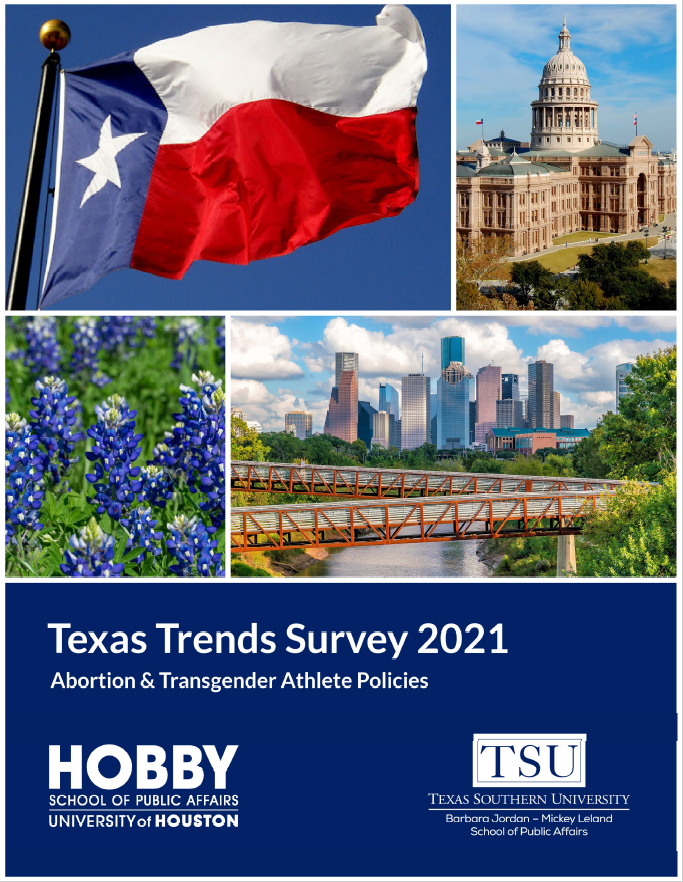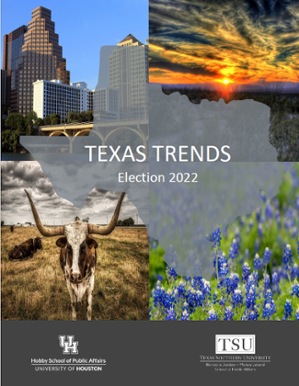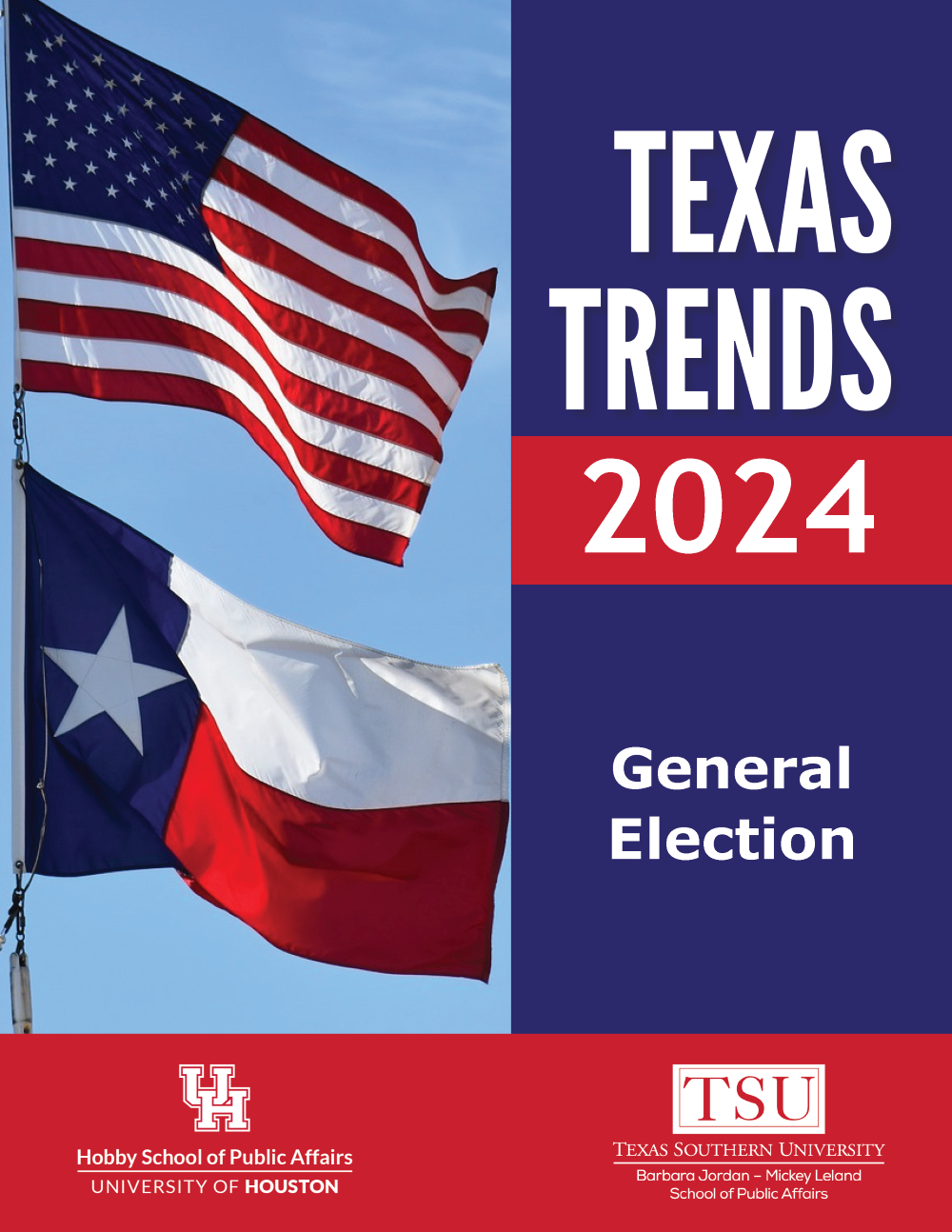UH-TSU Texas Trends Survey
Lieutenant Governor Bill Hobby. Congresswoman Barbara Jordan. Congressman Mickey Leland – three Texas legends dedicated their lives to serving the Lone Star State.
Their political careers were in full swing in the early 1970s when the Texas population was smaller and less diverse. They had a common goal: to create a better state for everyone.
In the spirit of these Texas political pioneers, the Hobby School of Public Affairs at the University of Houston and the Executive Master of Public Administration Program in the Barbara Jordan – Mickey Leland School of Public Affairs at Texas Southern University launched the Texas Trends Survey, a five-year project to study Texas's changing population and opinions, in 2021. In addition to a representative sample of all Texans, the surveys will include an oversample of people of color to allow for an objective and statistically valid report of their opinions and experiences.
The data from the annual surveys and reports are shared with policymakers, business and community leaders, academics and the public. With objective data, decision-makers throughout the state will be equipped to determine the best routes leading to a better Texas for everyone.
Find direct links to the reports below or visit the dedicated landing pages organized by calendar year.
|
Releases in the 2021 statewide survey examined electric vehicles, criminal justice reforms, election reforms, redistricting, abortion and transgender policies. |
Releases in the 2022 statewide survey focused on health care, criminal justice, immigration,
inflation, school safety, gun safety and vote intention in Harris County. |
Releases in the 2023 statewide survey will examine state propositions, school vouchers, the 2024 primary elections, extreme weather, climate change and electric vehicle adoption. |
|
Releases in the 2024 statewide survey examined the November 2024 election, school choice/vouchers, housing, immigration and climate challenges. |
Releases in the 2025 statewide survey examined the 2026 election, legislation/redistricting,
immigration and energy. |
|
 |
 |
Research Team
Michael O. Adams, Professor of Political Science and Founding Director of the Executive Master of Public Administration Program, Texas Southern University
Gail Buttorff, Associate Director, Center for Public Policy; Instructional Assistant Professor, Hobby School of Public Affairs
Renée Cross, Executive Director & Researcher, Hobby School of Public Affairs
Jim Granato, Dean, Hobby School of Public Affairs
Mark P. Jones, James A. Baker III Institute for Public Policy's Fellow in Political Science, Rice University; Senior Research Fellow, Hobby School of Public Affairs
Maria P. Perez Argüelles, Research Assistant Professor, Hobby School of Public Affairs, University of Houston
Pablo M. Pinto, Director, Center for Public Policy; Professor, Hobby School of Public Affairs
Carroll G. Robinson, Associate Professor, Texas Southern University
Savannah Sipole, Research Associate, Hobby School of Public Affairs
Agustín Vallejo, Research Assistant Professor, Hobby School of Public Affairs
Robert Lucas Williams, Assistant Professor, Texas Southern University
Sunny Wong, Professor, Hobby School of Public Affairs
Communications Team
Diana Benitez, Program Director, Web & Graphic Design, Hobby School of Public Affairs
Victoria Cordova, Executive Director of Communications, Hobby School of Public Affairs
Jeannie Kever, Communications Consultant
Celeste Zamora, Communications Manager, Hobby School of Public Affairs





